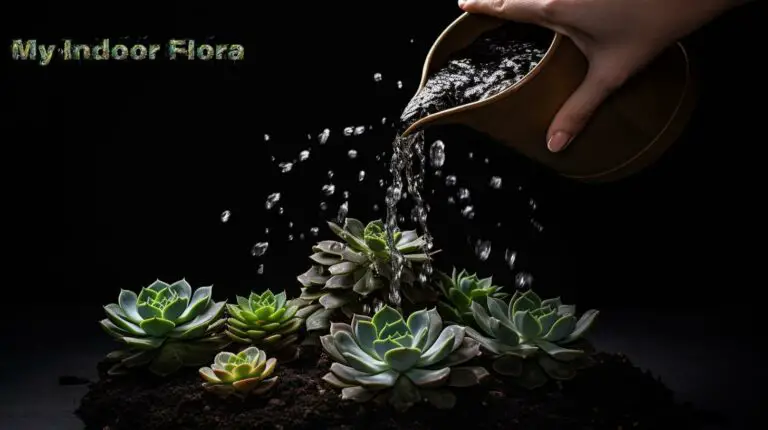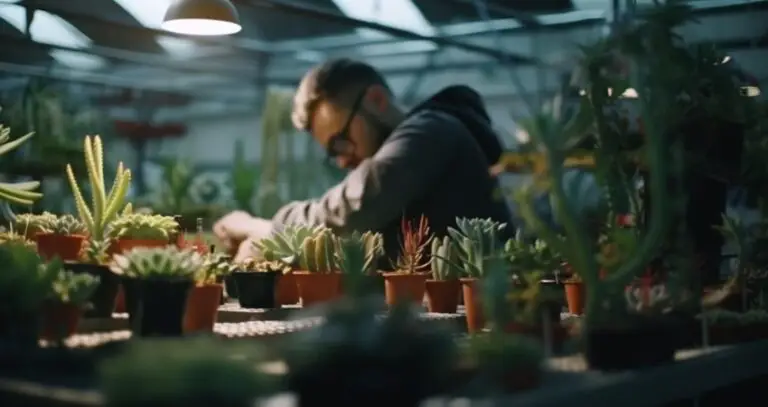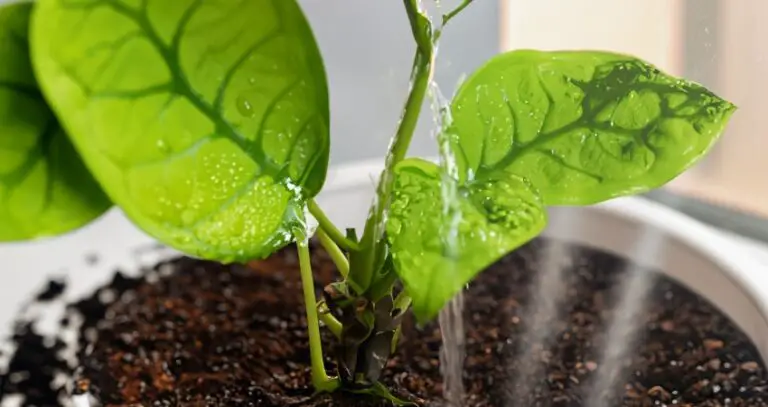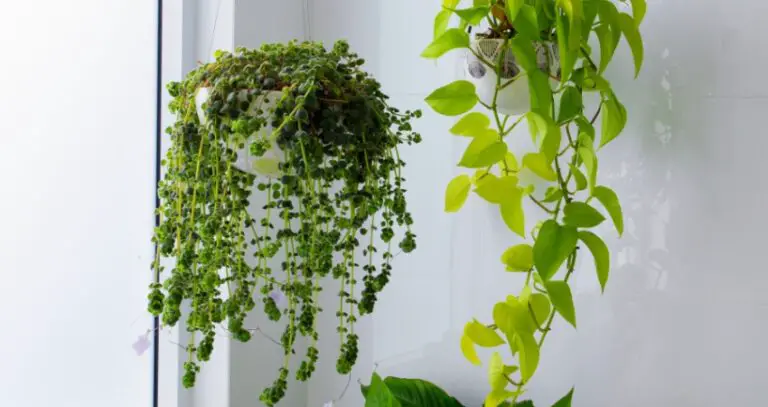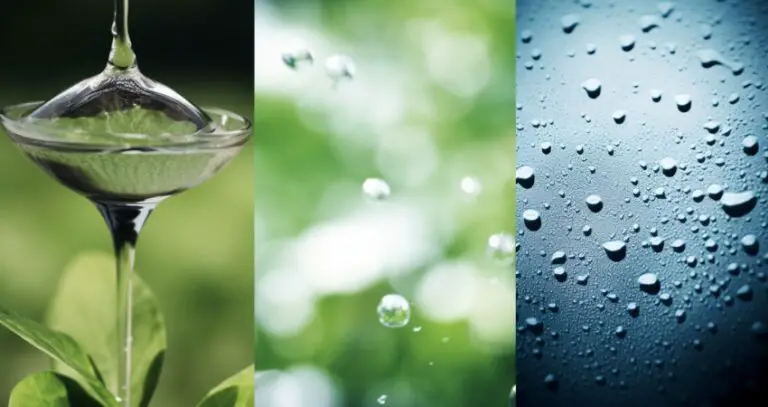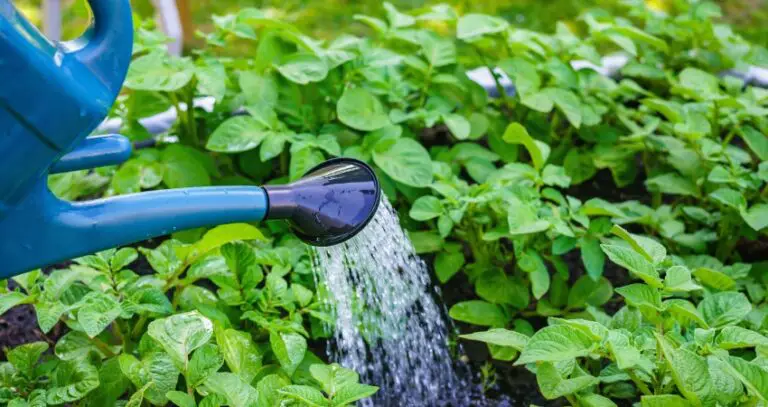Watering indoor plants can feel like a mystifying art form, often leaving plant enthusiasts in a perplexed state as they grapple with the delicate balance of hydration and drought.
This comprehensive guide will illuminate the path to mastering the intricacies of indoor plant watering, ensuring your verdant companions remain healthy and vigorous. By delving into the nuances of each plant’s water requirements and unraveling the secrets of watering techniques, we will help you craft a foolproof strategy to keep your houseplants thriving.
So, let us embark on this enlightening journey, and soon, you’ll transform from a bewildered novice to a confident indoor plant watering connoisseur.
Understanding Your Plant’s Water Requirements
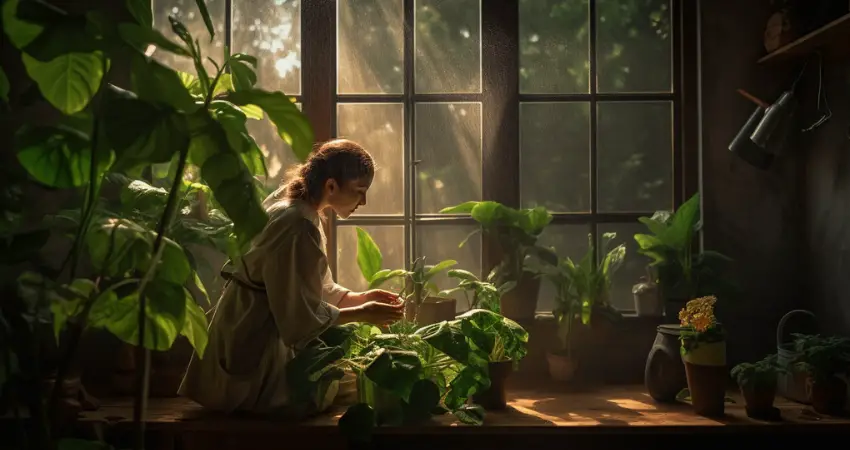
Factors Affecting Water Needs
Several factors influence your houseplants’ water requirements. These include:
- Light exposure: The more light a plant receives, the more water it needs.
- Temperature: Higher temperatures increase evaporation, requiring more frequent watering.
- Humidity: Low humidity levels increase the plant’s demand for water.
- Soil type: Soil that drains quickly, like cactus mix, requires more frequent watering than moisture-retaining potting soil.
By understanding these factors and adjusting your watering schedule accordingly, you can ensure your plants receive the proper amount of water.
Essential Elements for Plant Growth
When you water your plants, you provide them with more than just hydration; you also supply essential nutrients necessary for growth. These elements include:
- Carbon, hydrogen, and oxygen – absorbed from air and water
- Macronutrients, such as nitrogen, phosphorus, and potassium – taken up from soil and fertilizers
- Micronutrients, like iron, manganese, and zinc – also obtained from soil and fertilizers
Using the proper watering technique ensures that these vital components reach your plants’ roots, allowing for healthy growth and development.
Different Types of Moisture Requirements for Different Plant Species
Each plant species has unique moisture requirements, and understanding these needs is crucial for successful indoor gardening. Some common moisture preferences include:
| Plant Type | Moisture Requirement |
|---|---|
| Succulents and cacti | Minimal water, allowing the soil to dry out between waterings |
| Ferns and tropical plants | Consistently moist soil, without letting it become soggy |
| Orchids | Periods of drying out between thorough waterings |
By catering to your plant’s specific moisture preferences, you can ensure it thrives in your indoor environment.
Watering Techniques
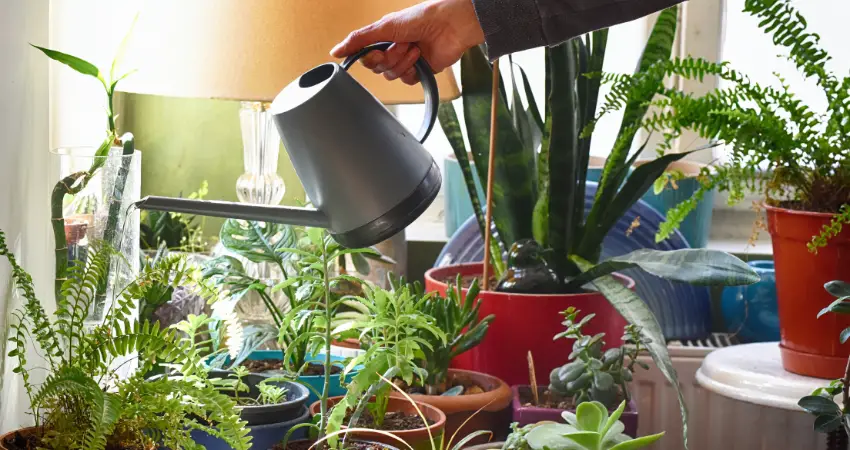
In this section, we will discuss various watering techniques that you can use to keep your indoor plants healthy and hydrated. The following methods cater to different types of plants and their unique requirements, so understanding each method can help you make informed decisions for your houseplants.
Top Watering:
Top watering is the most common method of watering indoor plants. To do this, pour water directly onto the soil surface, near the base of the plant, until the water drains out of the pot’s drainage holes. This technique ensures your plant’s roots receive the necessary moisture and encourages even distribution of water throughout the soil.
Bottom Watering:
Bottom watering is another method that involves soaking your plant’s pot in a tray or container filled with water. The plant’s roots will absorb water through the pot’s drainage holes, allowing the soil to become moist from the bottom up. This method is useful for plants that require a thorough soaking or for plants with dried out soil that does not absorb water easily.
Sub-irrigation systems:
Sub-irrigation systems, such as wick watering or plant trays, help deliver water directly to the plant’s roots through capillary action. In these systems, a wick or another absorbent material is placed in the plant’s pot, drawing water from a separate water reservoir. This method provides consistent moisture and prevents overwatering, making it suitable for sensitive plants.
Self-Watering Systems:
Self-watering systems are an excellent choice for those who want a low-maintenance and consistent watering solution. These systems have built-in water reservoirs that slowly release water into the soil, ensuring the plant’s roots stay moist without overwatering. Self-watering pots and containers are widely available and come in various sizes, for both small and large indoor plants.
Misting and Humidity Trays:
Misting and humidity trays cater to the needs of tropical plants that thrive in high humidity. Misting involves spritzing water onto the plant’s leaves to increase the surrounding humidity, while humidity trays hold water beneath the plant, allowing it to evaporate and create a humid environment. By using these techniques in combination with the appropriate watering method, you can create an ideal environment for your indoor plants.
Water Quality and Sources
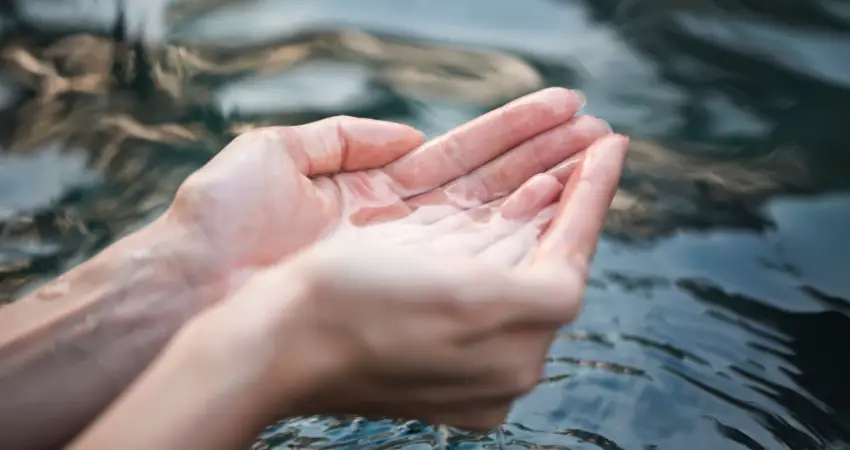
Tap water vs. filtered water vs. distilled water
Choosing the right water source for your houseplants can be crucial for their health. Tap water can contain chlorine and minerals which, in excess, can harm your plants. Filtered water has fewer impurities and can be a better option for sensitive plants. Distilled water, being the purest form of water, is ideal for plants with specific water requirements or those that can easily accumulate harmful minerals.
Rainwater and Well Water
Rainwater is a great natural source for your houseplants, as it is usually free of harsh chemicals and salts. Collecting rainwater in containers and using it to water your plants can be beneficial. Well water, on the other hand, can vary in quality; it could be rich in minerals that benefit your plants, or it could have high levels of salts and other elements that might not be suited for all plants. It is best to test your well water before using it on your houseplants.
Filtered and Distilled Water
Filtered water, like water from a pitcher filter or a faucet-mounted filter, can be helpful in providing a purer water source for your plants. Distilled water, being completely free of minerals and salts, is ideal for sensitive plants with specific water requirements, like orchids or carnivorous plants. However, if your plants thrive on additional minerals found in tap water, using filtered or distilled water alone might not be sufficient, and you may need to supplement their needs.
Water pH and its impact on plant health
The pH level of water can significantly impact your houseplant’s health. Most plants prefer slightly acidic to neutral water (pH 6-7), as it helps with nutrient uptake. Too alkaline or acidic water can lead to nutrient deficiencies in your plants. Test the pH level of the water source you plan to use and adjust it to the optimal range for your plants, if necessary, by using additives.
Dealing with hard water and salt build-up
Hard water is high in calcium and magnesium, which can lead to salt build-up in your plant’s soil. This build-up can harm your plant by blocking the uptake of essential nutrients. To minimize these issues, flush the soil periodically with plenty of water to wash away excess salts. If you have hard water, consider using filtered, distilled, or rainwater to prevent build-up and keep your houseplants healthy.
Choosing the Right Watering Tools
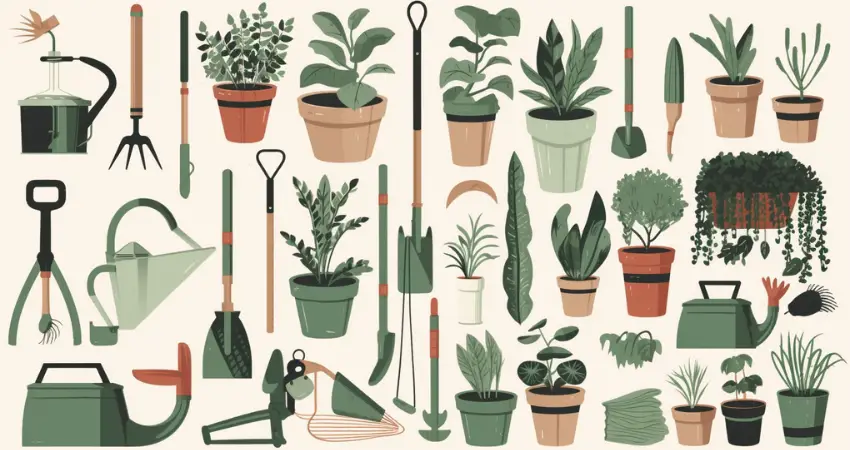
When it comes to watering your indoor plants, using the appropriate tools can make all the difference. The right watering tools will make the job easier and help maintain the health of your houseplants.
First, invest in a good-quality watering can. Look for a lightweight, slender design with a long, thin spout. This will make it easier for you to target the water at the base of the plant or onto the surrounding soil surface. A popular option for indoor watering is the Haws Handy Indoor Plastic Watering Can.
Other helpful watering tools include:
- Water meters: These devices can help you measure the moisture levels in the soil, ensuring you’re providing just the right amount of water for your plants. They can be especially useful for beginners or those with large plant collections.
- Misting bottles: Some houseplants, like ferns and orchids, appreciate increased humidity. A misting bottle allows you to gently spray water onto the leaves, simulating a more humid environment.
- Self-watering pots: These pots have a built-in reservoir that slowly releases water to the plant over time. They can be a great option for busy plant owners or those who travel frequently.
Finally, don’t forget the importance of using the right type of water for your houseplants. Tap water can contain chlorine and other chemicals that may be harmful to your plants. Consider using distilled water or letting tap water sit out overnight to allow harmful chemicals to evaporate before watering.
Monitoring and Scheduling
Mastering indoor plant watering starts with monitoring your plants and establishing a proper watering schedule. In this section, we’ll discuss assessing soil moisture, creating a schedule based on plant needs and environmental factors, adjusting for seasonal changes, and providing tips for consistent watering.
Assessing Soil Moisture
One essential aspect of plant watering is understanding the moisture level of your plant’s soil. To do this, gently press your finger about 2 inches down into the soil of the pot. If it feels moist, there’s no need to water your plant just yet. Instead, wait for the soil to dry before watering again. Always check the top 1″ (2.5 cm) of the potting soil to ensure it is dry before watering your houseplants.
Creating a Schedule Based on Plant Needs and Environmental Factors
Different plants have different watering requirements. Many factors contribute to the right watering schedule, like humidity levels, lighting, and room temperature. Be sure to research your plant species to determine the ideal watering frequency. You should aim to maintain a consistent schedule to ensure your plants thrive.
Adjusting for Seasonal Changes
As the seasons change, so do your plants’ watering needs. During the warmer months, your plants may require more frequent watering, while in colder seasons, they may need less. Adjust your watering schedule with the changing temperatures, and always watch for signs of over- or under-watering.
Tips for Consistent Watering
- Use a moisture meter to measure soil moisture more accurately.
- Rotate the face of your plant to ensure it receives even exposure to light.
- If you travel frequently, consider using a self-watering system to maintain consistency in your plant’s watering schedule.
- Create a calendar to help you track your watering routine.
- Group plants with similar watering needs together, making it easier to maintain a consistent schedule.
Special Watering Considerations
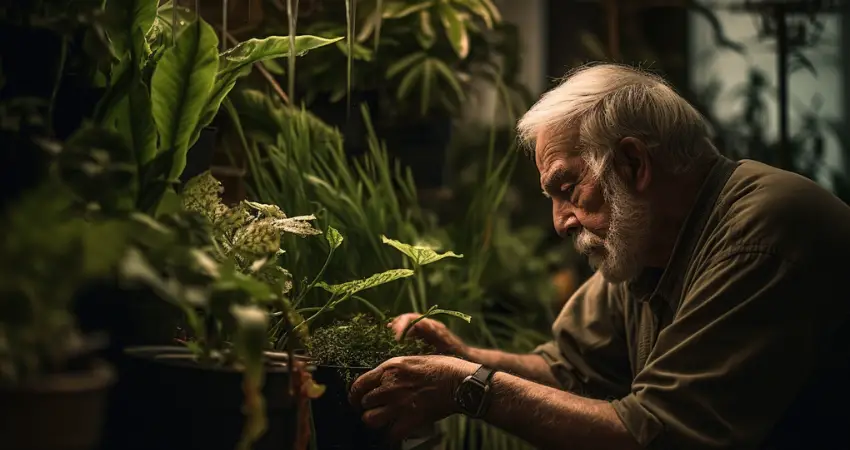
Watering during different growth stages
As your houseplants grow and develop, their watering needs may change. During the active growing season, they will typically require more frequent watering. Keep an eye on the soil moisture, and ensure that you are providing enough water to support this growth.
When a plant is in its dormant stage or is receiving less light, it may require less water. Monitor the soil moisture level and adjust your watering routine accordingly.
Adjusting watering for seasonal changes
Seasonal changes can have a significant impact on your indoor plants’ watering requirements. During the hotter, more humid summer months, plants may require more water due to increased evaporation. Be sure to increase watering frequency to prevent your plants from drying out.
In contrast, during the cooler winter months, the temperature and humidity drop, leading to reduced evaporation. As a result, your houseplants may need less water. Remember to adjust your watering schedule and avoid overwatering, which can lead to root rot.
Watering during vacation or travel
If you’re going to be away from your houseplants for an extended period, it’s important to ensure they receive sufficient water while you’re gone. Some options to consider are:
- Asking a trusted friend or neighbor to water your plants.
- Using a self-watering device or slow-release watering system.
- Placing your plants in a location with higher humidity, such as a bathroom, to reduce water loss.
Make sure to choose the best option based on your plants’ specific water requirements and the duration of your absence.
Watering plants with unique requirements
Remember that some houseplants have specific water needs or preferences. For example:
- Succulents and cacti prefer a more thorough, but infrequent watering.
- Orchids and epiphytes require a well-draining media and should never be allowed to sit in water.
- Palms and ferns appreciate consistent moisture and higher humidity levels.
Ensure that you’re taking into account the unique needs of each type of plant in your home to create the optimal environment for their growth and well-being.
Common Mistakes and Troubleshooting

Overwatering
Overwatering is the most common mistake when it comes to indoor plant care. It can lead to root rot and other issues. To prevent overwatering, allow the soil to dry out somewhat between waterings and ensure your plant has proper drainage.
Underwatering
Underwatering can lead to wilted, stressed plants. Make sure to thoroughly soak the soil when watering, and allow excess water to drain away. If your plant shows signs of underwatering, adjust your watering schedule accordingly.
Signs of Water Stress
Plants show water stress in various ways, including wilting, yellowing leaves, and drooping growth. Observe your plant regularly to identify any signs of stress and adjust your watering practices as needed.
Reviving Drought-Stressed Plants
If your plant suffers from underwatering, thoroughly water it and consider moving it to a slightly less sunny location while it recovers. Give it time to recuperate, and adjust your watering schedule to prevent future stress.
Diagnosing and Treating Root Rot
Root rot is often caused by overwatering and poor drainage. Symptoms include a foul smell, black or mushy roots, and yellowing leaves. Remove any affected roots, repot your plant in fresh soil, and adjust your watering habits.
Addressing Mold and Mildew Caused by Excess Moisture
Mold and mildew can develop in moist environments. To prevent them, ensure proper air circulation around your plants, avoid overwatering, and consider using a fungicide if the problem persists.

